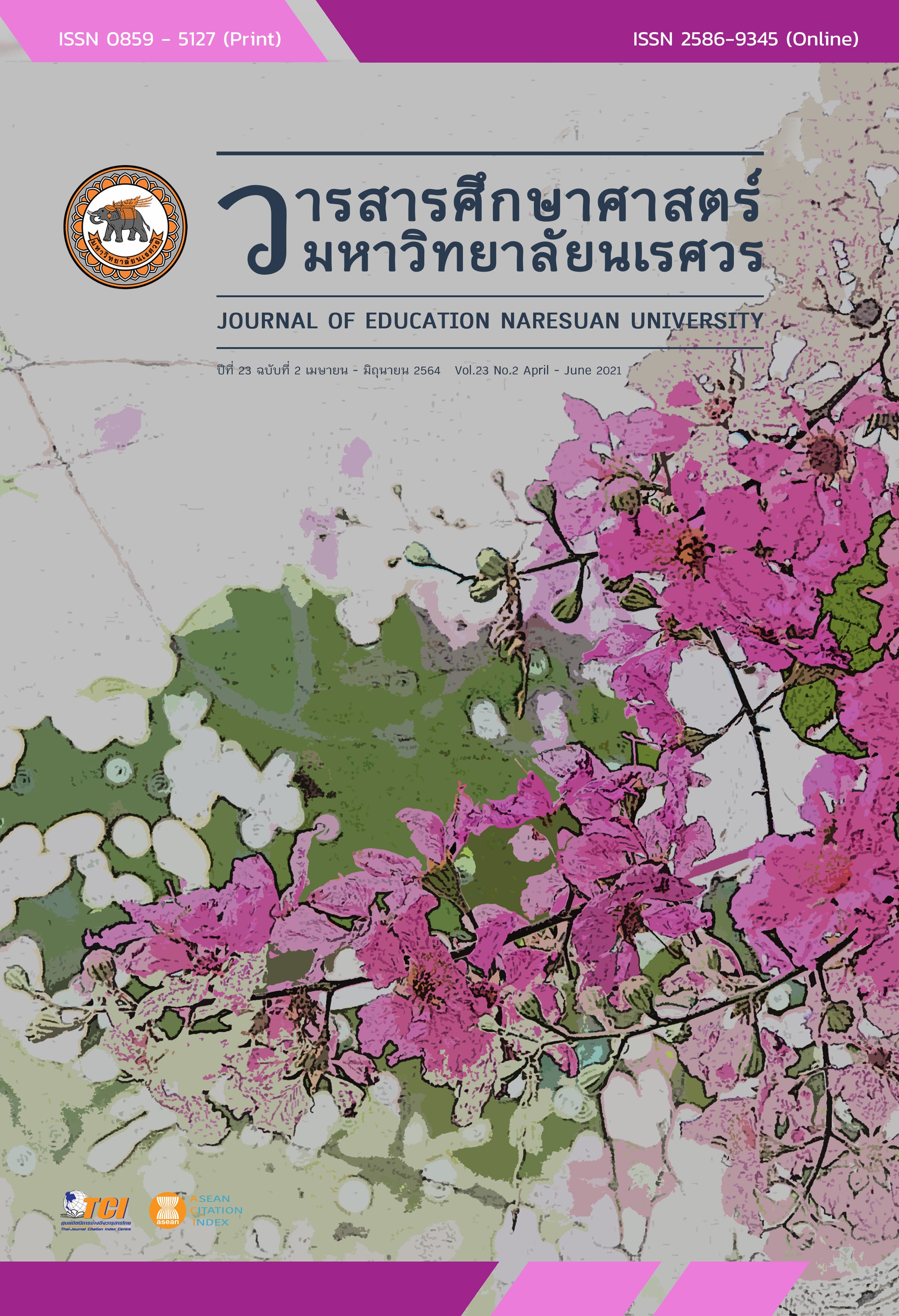READINESS FOR ONLINE LANGUAGE LEARNING AMONG THAI EFL UPPER SECONDARY LEARNERS
Main Article Content
Abstract
The digital era has led to an educational transformation from face-to-face learning to a more online learning approach. The readiness for Online Language Learning (OLL) is essential to determine learners’ success and ability to achieve goals in an OLL course. This study investigated the readiness for OLL among Thai EFL upper secondary learners by using a survey method. A questionnaire included items about the respondents’ attitude and motivation, self-regulated learning (SRL), English language self-efficacy, and technology literacy and access. It was translated into Thai and distributed online to 273 upper secondary learners in public schools. The study revealed that the overall readiness for OLL among respondents was relatively high. However, SRL was scored the lowest while technology literacy and access was scored the highest.
Article Details
The owner of the article does not copy or violate any of its copyright. If any copyright infringement occurs or prosecution, in any case, the Editorial Board is not involved in all the rights to the owner of the article to be performed.
References
Ahmadi, R. (2012). Readiness for self-access language learning: A case of Iranian students. Studies in Self-Access Learning Journal, 3(3), 254-264.
Andrade, M. S., & Bunker, E. L. (2009). A model for self-regulated distance language learning. Distance Education, 30(1), 47-61.
Andrade, M. S. (2017). Online English language learning: Theory-based course design and pedagogy. Journal of Education and Training Studies, 5(3), 1-10.
Bandura, A. (1993). Perceived self-efficacy in cognitive development and functioning. Educational psychologist, 28(2), 117-148.
Barrette, C. M. (2001). Students Preparedness and Training for CALL. CALICO Journal, 19(1), 5-36.
Burrows, T., & Stepanczuk, D. (2013). Gauge of readiness for Internet-based language learning: An 800 lb GORILLa. JALT CALL Journal, 9(2), 197–217.
Cheng, H., & Dörnyei, Z. (2007). The use of motivational strategies in language instruction: The case of EFL teaching in Taiwan. Innovation in Language Learning and Teaching, 1(1), 153–174.
Cinkara, E., & Bagceci, B. (2013). Learners’ attitudes towards online language learning and corresponding success rates. Turkish Online Journal of Distance Education-TOJD, 14(2), 118-129.
Dembo, M. H., Junge, L. G., & Lynch, R. (2006). Becoming a Self-Regulated Learner: Implications for Web-Based Education. In H. F. O'Neil & R. S. Perez (Eds.), Web-based learning: Theory, research, and practice (pp. 185–202). Lawrence Erlbaum Associates Publishers.
Fadzil, M., Latif, L. A., Kassim, Z. A., & Subramaniam, T. T. (2016). MOOCs Readiness among Malaysian Adult Learners (Master thesis). Kuala Lumpur: Open University Malaysia.
Gardner, R. C. (1985). Social psychology and second language learning: The role of attitudes and motivation. London: Edward Arnold.
Hung, M. L., Chou, C., Chen, C. H., & Own, Z. Y. (2010). Learner readiness for online learning: Scale development and student perceptions. Computers & Education, 55(3), 1080-1090.
Ilgaz, H., & Gülbahar, Y. (2015). A snapshot of online learners: e-Readiness, e-Satisfaction and expectations. The International Review of Research in Open and Distributed Learning, 16(2), 171-187.
James, P. K., & Christian, I. E. (2016). Learners readiness for xMOOCs: Inequity in Nigeria. European Journal of Computer Science and Information Technology, 4(3), 16-46.
Manning, C., Morrison, B. R., & McIlroy, T. (2014). MOOCs in language education and professional teacher development: Possibilities and potential. Studies in Self-Access Learning Journal, 5(3), 294-308.
Ministry of Industry. (2016). 20 years’ development strategy of Thailand industry 4.0 (2017- 2037). Retrieved April 4, 2018, from http://www.oie.go.th
Moore, M. (1997). Theory of transactional distance. In D. Keegan (Ed.), Theoretical principles of distance education (pp. 22–38). New York: Routledge.
Muilenburg, L.Y., & Berge, Z. L. (2005). Student barriers to online learning: A factor analysis study. Distance Education, 26(1), 29-48.
Ngampornchai, A., & Adams, J. (2016). Students’ acceptance and readiness for E-learning in Northeastern Thailand. International Journal of Educational Technology in Higher Education, 13(1). 1-13.
Saekow, A., & Samson, D. (2011). A study of e-learning readiness of Thailand's higher education comparing to the United States of America (USA)'s case. ICCRD2011 - 2011 3rd International Conference on Computer Research and Development. 2. 10.1109/ICCRD.2011.5764134.
Samudavanija, C. (2008). Basic education core curriculum B.E. 2551 (A.D. 2008). Bangkok: Ministry of Education.
Shakarami, A., Khajehei, H., & Hajhashemi, K. (2013). Digital self-efficacy and language learning enhancement in an online setting. Journal of Basic and Applied Scientific Research (JBASR), 3(11), 80-84.
Smith, P., Murphy, K., & Mahoney, S. (2003). Towards identifying factors underlying readiness for online learning: An exploratory study. Distance Education, 24(1), 57-67.
Sun, S. Y. (2014). Learner perspectives on fully online language learning. Distance Education, 35(1), 18-42.
Ushida, E. (2013). The Role of Students Attitudes and Motivation in Second Language Learning in Online Language Courses. CALICO Journal, 23(1), 49-78
Vanijdee, A. (2003). Thai distance English learners and learner autonomy. Open Learning, 18(1), 75–84.
Wang, C., Kim, D., Bong, M., & Ahn, H. S. (2013). Examining measurement properties of an English Self-Efficacy scale for English language learners in Korea. International Journal of Educational Research, 59, 24-34.
Watkins, R., Leigh, D., & Triner, D. (2004). Assessing readiness for e-learning. Performance Improvement Quarterly, 17(4), 66-79.
Whale, D. (2006). Technology skills as a criterion in teacher evaluation. Journal of Technology and Teacher Education, 14(1), 61-74.
Yu, T., & Richardson, J. C. (2015). An Exploratory Factor Analysis and Reliability Analysis of the Student Online Learning Readiness (SOLR) Instrument. Online Learning, 19(5). 120-141.
Zimmerman, B. J. (2002). Becoming a self-regulated learner: An overview. Theory into Practice, 41(2), 64-70.


